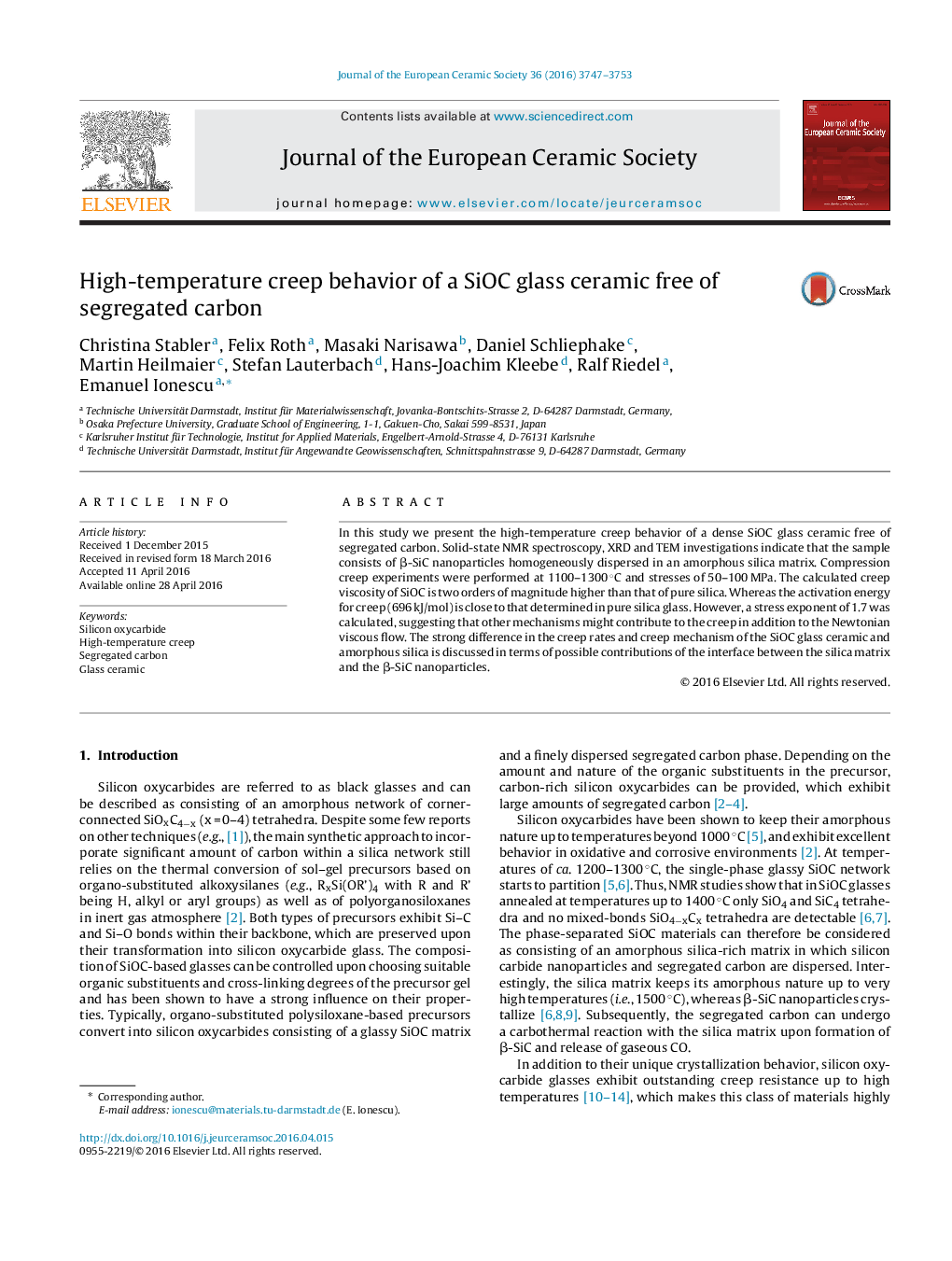| Article ID | Journal | Published Year | Pages | File Type |
|---|---|---|---|---|
| 1473499 | Journal of the European Ceramic Society | 2016 | 7 Pages |
In this study we present the high-temperature creep behavior of a dense SiOC glass ceramic free of segregated carbon. Solid-state NMR spectroscopy, XRD and TEM investigations indicate that the sample consists of β-SiC nanoparticles homogeneously dispersed in an amorphous silica matrix. Compression creep experiments were performed at 1100–1300 °C and stresses of 50–100 MPa. The calculated creep viscosity of SiOC is two orders of magnitude higher than that of pure silica. Whereas the activation energy for creep (696 kJ/mol) is close to that determined in pure silica glass. However, a stress exponent of 1.7 was calculated, suggesting that other mechanisms might contribute to the creep in addition to the Newtonian viscous flow. The strong difference in the creep rates and creep mechanism of the SiOC glass ceramic and amorphous silica is discussed in terms of possible contributions of the interface between the silica matrix and the β-SiC nanoparticles.
